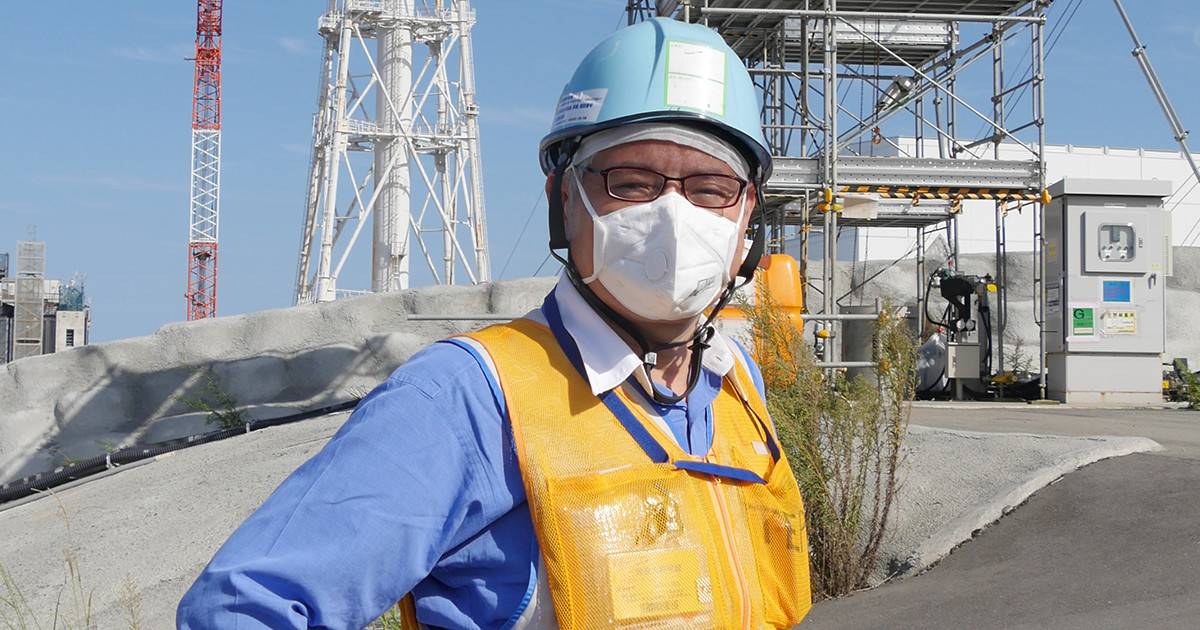Fukushima Daiichi
Nuclear Power Plant in 2017
The Need for a Young Labor Force
While September 11 is a tragic day in America, it’s not a particularly fortunate day here in Japan on this side of the Pacific either.
This September 11th marked six and a half years since the Great East Japan Earthquake on March 11, 2011. As this day approached, there was a fierce debate all throughout Japanese society about the recovery from the earthquake.
The diffusion of radioactive substances at Fukushima Daiichi Nuclear Power Plant following the earthquake remains the focal event even now. I was chief editor at JNOC News at the time and I reported on Fukushima Daiichi Nuclear Power Plant.
I can remember entering the Fukushima disaster area to cover the story after the Great East Japan Earthquake on March 11th, 2011. At the time, information about the situation at Fukushima Daiichi Nuclear Power Plant was changing by the moment.
Not only Fukushima, but all of Japan, was in the grip of a “radiation panic.” On that snowy, blustery night, the Chinese consulate general in Niigata was helping to drive Chinese citizens to the airport so that they could evacuate back home to China.
There I saw a lone Japanese man following his Chinese wife with his child in his arms, who said through tears, “China is kind. They see how bad things are for you here, and they come pick you up so you can go home. What are we going to do now? To think we would suffer so much because of Fukushima Daiichi!”
I visited Fukushima for the first time in six years. I got off the train at Tatsuta Station, and headed for Fukushima Daiichi power plant in a taxi. On the way, I asked the 70-year-old driver, Hiroyuki Taniguchi, about the situation there.
“We’re totally used to it by now. Everyone was surprised at first. After a while, a lot of people evacuated to other areas. As time went on, some people did come back. But almost all of the young couples with kids don’t want to return. There aren’t enough young people here,”
he said, his voice pained.
In fact, taking the Hitachi special express train from Ueno Station in Tokyo to Iwaki Station in Fukushima Prefecture, and then transferring to a regular train Iwaki Station to Tatsuta Station, the number of passengers steadily decreased, and there were fewer and fewer young people to be seen.
When I got off at the last stop, it was almost entirely white-haired seniors.
However, the numbers at Fukushima Daiichi Nuclear Power Plant are different. Currently, 7,000 people per day are working there on average.
Of them, about 1,000 are TEPCO employees, while the remaining 6,000 come from around 40 companies formally contracted with TEPCO, or the over 1,000 subcontractors. Local people from Fukushima Prefecture make up 55% of the total number.
Looking around the plant, nearly all of the workers are young people.

“Are there any foreign workers here? How much are the workers paid?” I asked. They gave the following responses.
1. There are no foreign workers employed by TEPCO directly. However, there are foreign workers employed by the companies contracted by TEPCO. In other words, there are foreign workers at Fukushima Daiichi, but the exact number is unclear. They do not exclude anyone for being a foreigner, so they have no particular interest in the exact number.
2. The specifics of wage conditions for workers are not well known. However, TEPCO is working to increase wages for laborers.
3. Efforts to attract young people to work here are ongoing.


